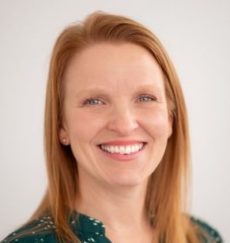
There’s a dichotomy in the nation’s capital when it comes to treatment of caregivers who provide for the aging and the aging services system itself.
You can hear it in how politicians talk about nursing home reform these days, and in how many neighborhoods here and across the country embraced their local nursing home workers as heroes just months ago.
How to bridge the gap between those differing perspectives — sometimes held by the same people — remains a challenge as the sector tries to pull out of the COVID spin.
On the one hand, nursing homes can’t “billboard their way out” of questions about their pandemic-era struggles and successes, said Susan Donley, senior vice president of marketing and communications for LeadingAge.
On the other, showing average Americans the potential of quality aging services is critical if providers hope to sustain and grow public support for aging services spending.
A new public service campaign launched this week in conjunction with LeadingAge’s Leadership Summit aims to bring more nursing home conversations to the corner bus stop. And to the subway station. And into the morning news and evening programming on local networks.
Keep Leading Life features beautiful images of seniors thriving and receiving care in a variety of settings, ranging from a senior living swimming pool to a nursing home bedroom to hospice.

The broadsides and related digital assets can be used by state affiliates and members to bring attention to the good work providers are doing — and underscore the idea that aging services are deserving of more public and governmental support.
The latest campaign is an outgrowth of the Opening Doors to Aging Services Initiative, launched during the pandemic by LeadingAge to better understand public perceptions about aging services.
“The public image of our field … has taken an unfair hit in the media with sweeping generalizations about our sector, which certainly doesn’t help our workforce challenges,” LeadingAge President and CEO Katie Smith Sloan said Tuesday. She noted that Opening Doors is designed to combat “sticky headlines” that lead to unfair characterizations.
Multiple polls and fact-finding last year revealed 45% of Americans had a favorable perception of nursing homes, with 20% taking an unfavorable view. That leaves more than a third of the population undecided, making them a prime target of messages showing the sector’s strengths and its value to a rapidly aging society.
“Telling someone new information so they form an opinion they didn’t have, that’s manageable. And that was really what we saw as an opportunity,” Donley told me this week. “If we can grab that 35% of people and tell them the truth about aging services, tell them authentically what aging services is all about, we can move those perceptions.”
Even better news that LeadingAge wants to share with legislators and policymakers: 70% of those who’ve had an aging services encounter would recommend those services, and an “overwhelming” majority supports increased government funding. A separate poll by the organization during the push for Build Back Better’s passage found 89% of Americans supported an increased public investment in affordable home care services, while 83% agreed that systemic shortcomings had “created unnecessary hardship and struggle” for families needing senior care.

Now the goal is to grow those numbers and create a groundswell of public support, the best lobbying tool around.
“We think this is how we achieve our mission,” Donley said. “When we can get people to understand what aging services is about and have a real understanding of the value that it contributes not only to their own individual lives … (but also) when we have an older population that is engaged and are contributing, that supports our whole country.”
Public storytelling will be a cornerstone of ongoing advocacy efforts as providers across the U.S. try to garner friendlier legislation and boost funding. With this campaign and its compelling images, LeadingAge hopes to catch the public looking and keep them talking.
Kimberly Marselas is senior editor of McKnight’s Long-Term Care News.
Opinions expressed in McKnight’s Long-Term Care News columns are not necessarily those of McKnight’s.




